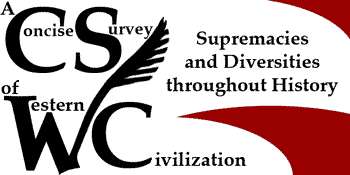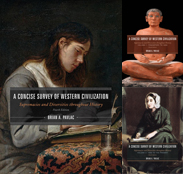Chapter 8
The Medieval Mêlée: The High and Later Middle Ages, 1000 to 1500
- Link to Study Guide for this chapter
- Link to Primary Sources for this chapter
- Link to Art History for this chapter
- Link to Links to the Web for this chapter
Return of the Kings
Royal authorities strengthened their control over European kingdoms.
Discipline and Domination
Monastic reforms helped reinforce the power of the popes.
Plenty of Papal Power
A reformed papacy claimed authority over the political power of kings.
The Age of Faith and Reason
The medieval Church pushed development of rational methods of learning.
A New Estate
The bourgeois of the towns separated themselves from the estates of clergy, nobles, and peasants.
Not the End of the World
After the Black Death, people increasingly questioned the authorities of manorial lords, the Holy Roman Emperors, and the popes.
Last Updated: 2023 June 3



